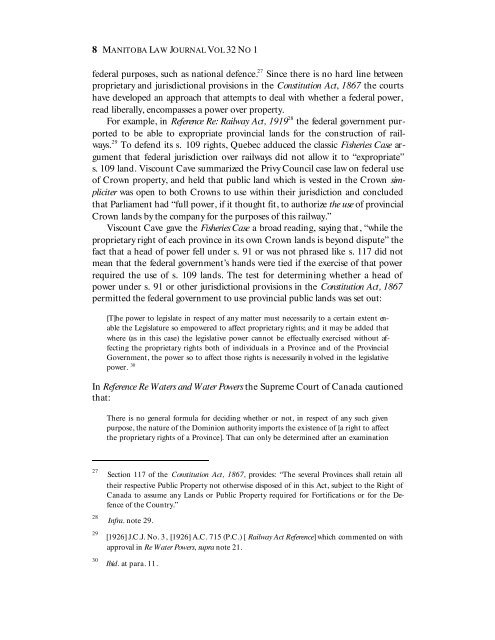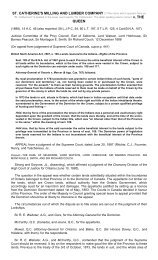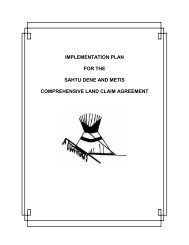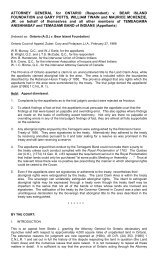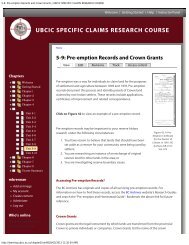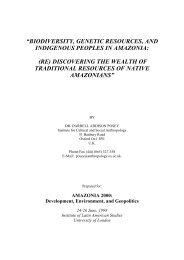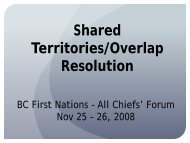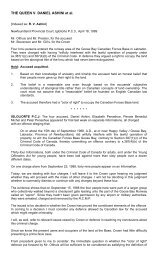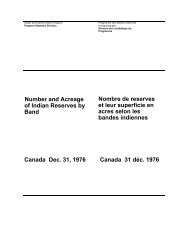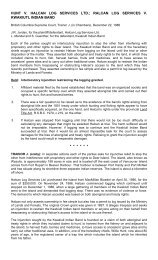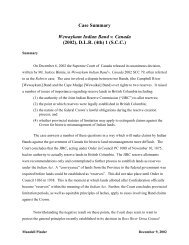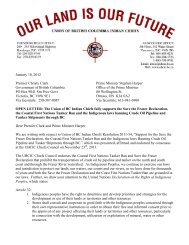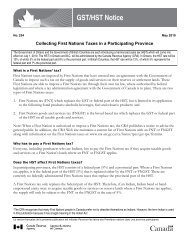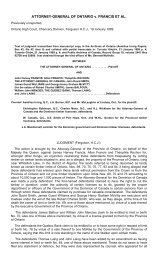Constitutional âPropertyâ and Reserve Creation: Seybold Revisited
Constitutional âPropertyâ and Reserve Creation: Seybold Revisited
Constitutional âPropertyâ and Reserve Creation: Seybold Revisited
You also want an ePaper? Increase the reach of your titles
YUMPU automatically turns print PDFs into web optimized ePapers that Google loves.
8 MANITOBA LAW JOURNAL VOL 32 NO 1federal purposes, such as national defence. 27 Since there is no hard line betweenproprietary <strong>and</strong> jurisdictional provisions in the Constitution Act, 1867 the courtshave developed an approach that attempts to deal with whether a federal power,read liberally, encompasses a power over property.For example, in Reference Re: Railway Act, 1919 28 the federal government purportedto be able to expropriate provincial l<strong>and</strong>s for the construction of railways.29 To defend its s. 109 rights, Quebec adduced the classic Fisheries Case argumentthat federal jurisdiction over railways did not allow it to “expropriate”s. 109 l<strong>and</strong>. Viscount Cave summarized the Privy Council case law on federal useof Crown property, <strong>and</strong> held that public l<strong>and</strong> which is vested in the Crown simpliciterwas open to both Crowns to use within their jurisdiction <strong>and</strong> concludedthat Parliament had “full power, if it thought fit, to authorize the use of provincialCrown l<strong>and</strong>s by the company for the purposes of this railway.”Viscount Cave gave the Fisheries Case a broad reading, saying that, “while theproprietary right of each province in its own Crown l<strong>and</strong>s is beyond dispute” thefact that a head of power fell under s. 91 or was not phrased like s. 117 did notmean that the federal government’s h<strong>and</strong>s were tied if the exercise of that powerrequired the use of s. 109 l<strong>and</strong>s. The test for determining whether a head ofpower under s. 91 or other jurisdictional provisions in the Constitution Act, 1867permitted the federal government to use provincial public l<strong>and</strong>s was set out:[T]he power to legislate in respect of any matter must necessarily to a certain extent enablethe Legislature so empowered to affect proprietary rights; <strong>and</strong> it may be added thatwhere (as in this case) the legislative power cannot be effectually exercised without affectingthe proprietary rights both of individuals in a Province <strong>and</strong> of the ProvincialGovernment, the power so to affect those rights is necessarily involved in the legislativepower. 30In Reference Re Waters <strong>and</strong> Water Powers the Supreme Court of Canada cautionedthat:There is no general formula for deciding whether or not, in respect of any such givenpurpose, the nature of the Dominion authority imports the existence of [a right to affectthe proprietary rights of a Province]. That can only be determined after an examination27282930Section 117 of the Constitution Act, 1867, provides: “The several Provinces shall retain alltheir respective Public Property not otherwise disposed of in this Act, subject to the Right ofCanada to assume any L<strong>and</strong>s or Public Property required for Fortifications or for the Defenceof the Country.”Infra. note 29.[1926] J.C.J. No. 3, [1926] A.C. 715 (P.C.) [ Railway Act Reference] which commented on withapproval in Re Water Powers, supra note 21.Ibid. at para. 11.


